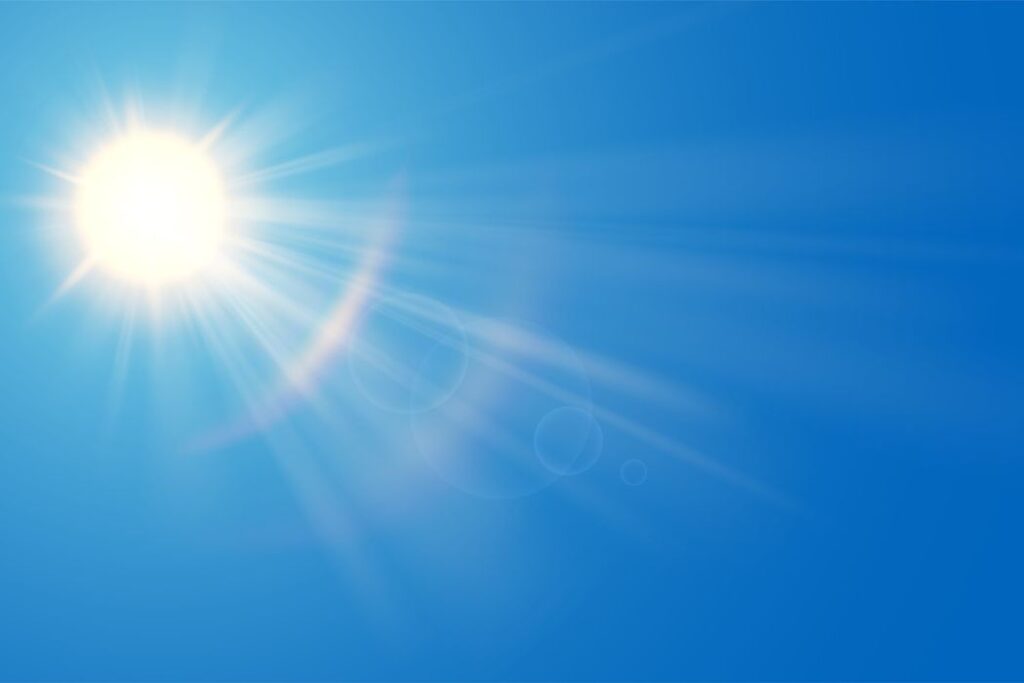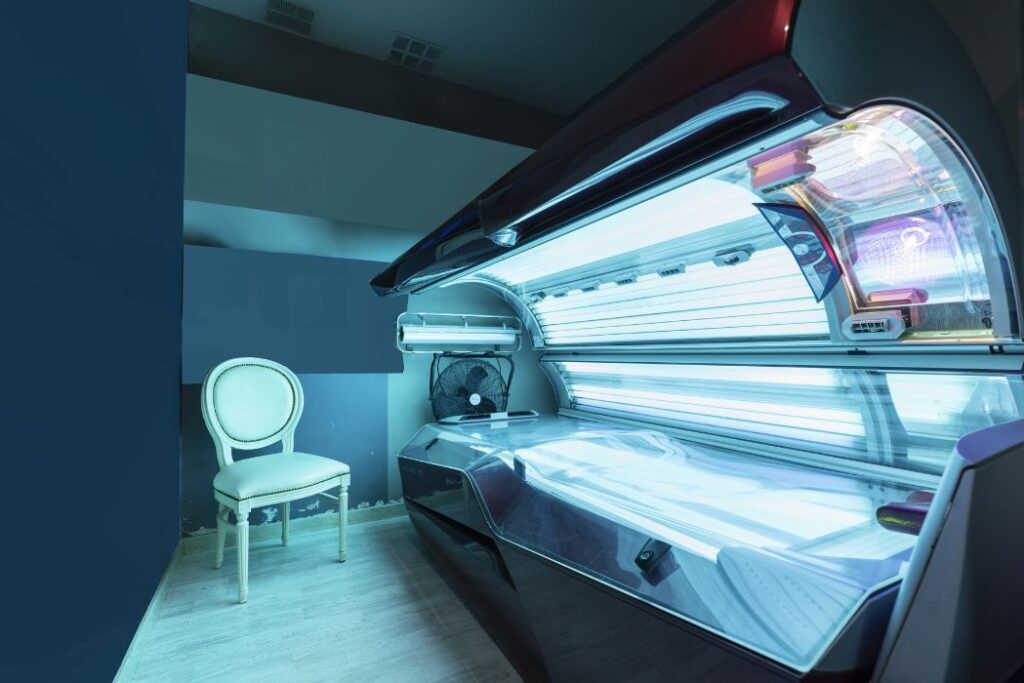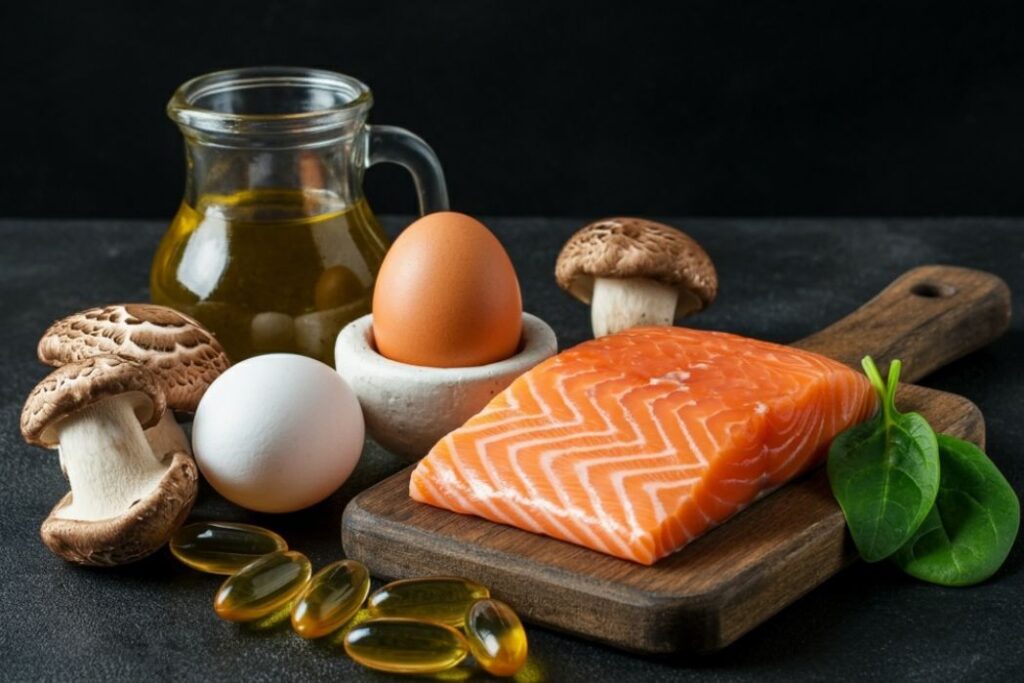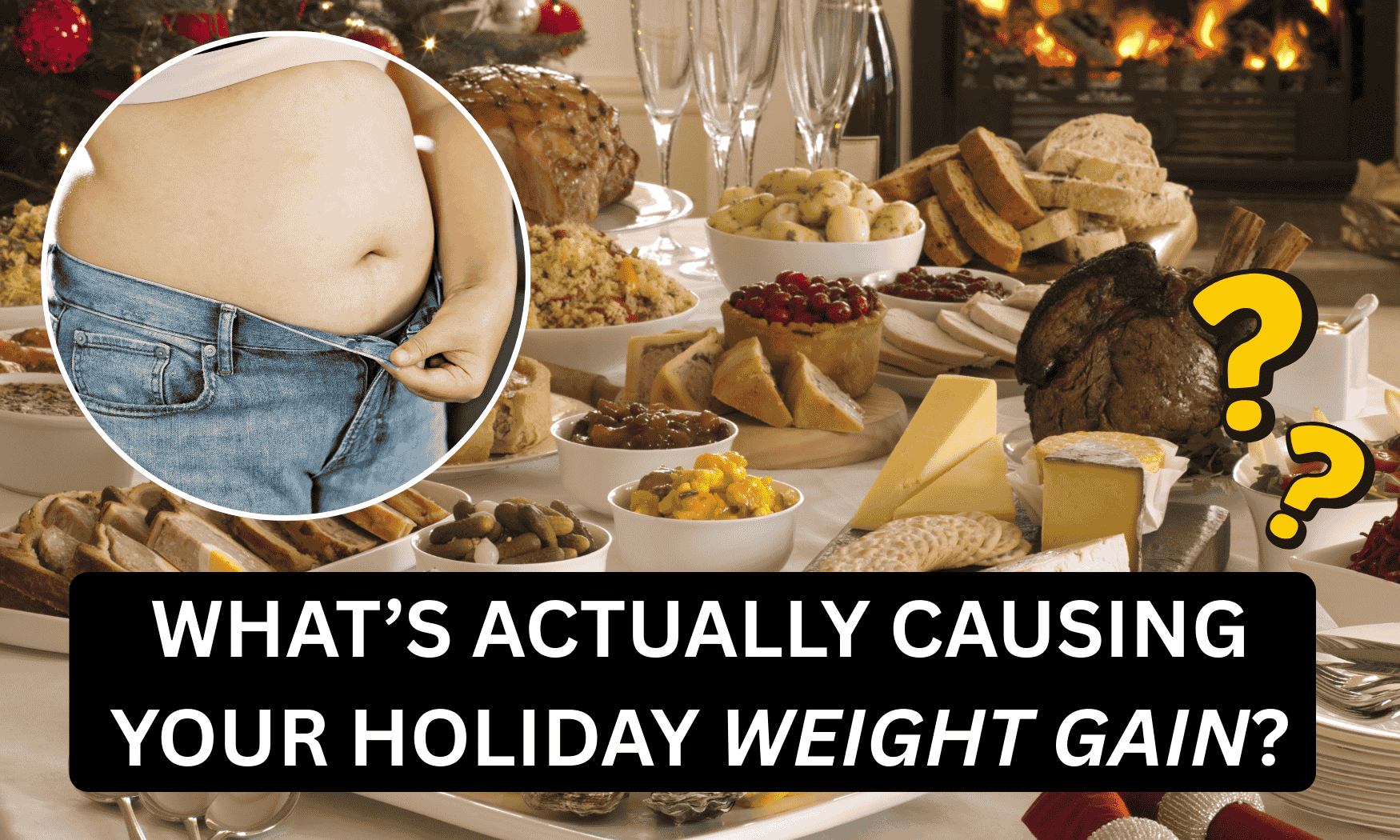Vitamin D, often referred to as the “sunshine vitamin,” plays an essential role in maintaining bone health, boosting immunity, and supporting overall well-being. While sunlight is the most natural source, geographic location, seasonal changes, and lifestyle can make it difficult to get enough vitamin D—especially in winter. Here’s how you can ensure you meet your vitamin D needs naturally and with supplementation.

Why Is Vitamin D So Important?
Vitamin D helps the body absorb calcium, which is critical for building and maintaining strong bones. It also supports muscle function, immunity, and mood regulation. A deficiency in vitamin D can lead to fatigue, a weakened immune system, and in severe cases, conditions like rickets in children or osteomalacia in adults [1]. During winter, when sunlight exposure is limited, maintaining adequate vitamin D levels becomes more challenging. Therefore, understanding alternative sources is essential.
Get Vitamin D From Sunlight
The body produces vitamin D when skin is exposed to UVB rays from the sun. Spending 10 to 30 minutes in the midday sun a few times a week is often sufficient for most people. However, factors like darker skin tones, sunscreen use, and shorter daylight hours during winter can reduce vitamin D synthesis [2].

Vitamin D on Cloudy Days
Even when skies are overcast, UVB rays can penetrate clouds and aid in vitamin D production, although at a reduced efficiency. Spending more time outdoors during peak daylight hours can help offset this limitation [2].
What About Indoor tanning?
For those with limited sunlight exposure, indoor tanning may seem like an alternative for boosting vitamin D levels. While they can stimulate vitamin D production due to UVB exposure, the risks outweigh the benefits. Frequent use of sunbeds is linked to increased risks of skin damage and cancer, making them an unsuitable long-term solution [3]. Instead, consider safer options like supplements or vitamin D-rich foods.

Vitamin D-Rich Foods
If sunlight isn’t enough, adding these foods to your diet can help boost your vitamin D levels:

- Fatty Fish: Salmon, mackerel, and sardines are excellent sources of vitamin D. Just a 3.5-ounce serving of cooked salmon provides around 66% of the recommended daily intake [4].
- Fortified Foods: Many products, such as milk, orange juice, and cereals, are fortified with vitamin D. Check labels to ensure adequate intake.
- Egg Yolks: One large egg yolk contains about 5% of the daily recommended vitamin D intake, making it a simple dietary addition.
- Sunlight-Exposed Mushrooms: Certain mushrooms, like maitake and portobello, synthesize vitamin D when exposed to sunlight or UV light, providing a plant-based option [5].
Vitamin D Supplements
Supplements are a reliable way to maintain optimal vitamin D levels, especially during winter. Vitamin D3 is the preferred form, as it is more effective in raising blood levels compared to D2 [6]. A daily supplement can fill the gap when natural sources are insufficient.
Risks of Vitamin D Deficiency
Low vitamin D levels are associated with:
- Weakened bones and an increased risk of fractures.
- Fatigue and muscle weakness.
- A compromised immune system.
- In severe cases, rickets in children and osteomalacia in adults [7].
Regular testing and supplementation can help prevent these risks.
Final Thoughts
Winter presents unique challenges for maintaining adequate vitamin D levels, but a combination of sunlight exposure, dietary changes, and supplements can ensure you meet your needs. Prioritize your health this season and consider consulting a healthcare provider to determine the best approach for maintaining optimal vitamin D levels.
References
- Holick, M. F. (2007). Vitamin D deficiency. New England Journal of Medicine, 357(3), 266-281. https://www.nejm.org/doi/full/10.1056/NEJMra070553
- Webb, A. R., & Holick, M. F. (1988). The role of sunlight in the cutaneous production of vitamin D3. Annual Review of Nutrition, 8(1), 375-399. https://www.annualreviews.org/content/journals/10.1146/annurev.nu.08.070188.002111
- Moan, J., Porojnicu, A. C., Dahlback, A., & Setlow, R. B. (2018). Addressing the health benefits and risks, in particular health benefits of increased sun exposure. Anticancer Research, 38(2), 1111-1117. https://ar.iiarjournals.org/content/38/2/1111
- USDA FoodData Central. Salmon, cooked. https://fdc.nal.usda.gov/
- Teichmann, A., Dutta, P. C., Staffas, A., & Jägerstad, M. (2007). Sterol and vitamin D2 contents in cultivated and wild grown mushrooms: Effects of UV irradiation. LWT – Food Science and Technology, 40(5), 815-822. https://www.sciencedirect.com/science/article/abs/pii/S0023643806001228
- Tripkovic, L., Lambert, H., Hart, K., Smith, C. P., Bucca, G., Penson, S., … & Lanham-New, S. A. (2012). Comparison of vitamin D2 and D3 supplementation in raising serum 25-hydroxyvitamin D status: A systematic review and meta-analysis. The American Journal of Clinical Nutrition, 95(6), 1357-1364. https://pubmed.ncbi.nlm.nih.gov/22552031/
- Kennel, K. A., Drake, M. T., & Hurley, D. L. (2010). Vitamin D deficiency in adults: When to test and how to treat. Mayo Clinic Proceedings, 85(8), 752-757. https://www.ncbi.nlm.nih.gov/pmc/articles/PMC2912737/





